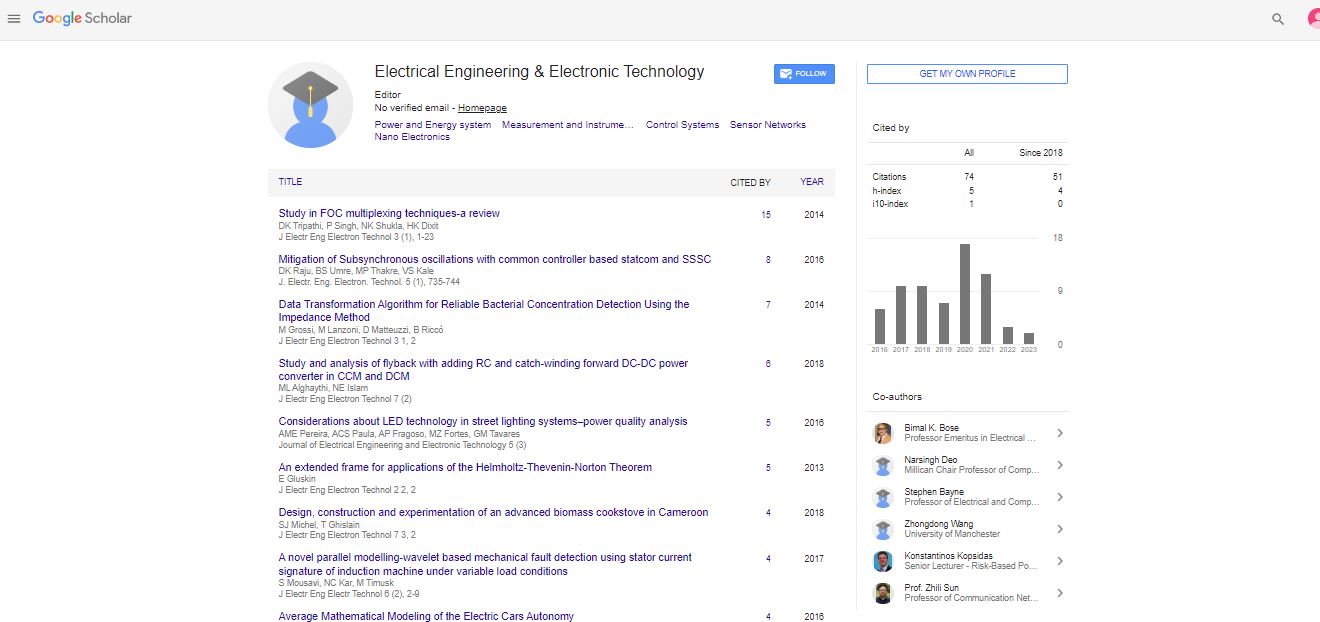Energy disaggregation on hourly whole-building data combing with robust information
Qing Gao
Fudan University, China
: J Electr Eng Electron Technol
Abstract
Energy consumption feedback on separate device can lead to energy-saving behavior, but current electricity meters only report whole-home data. Energy disaggregation is to separate the aggregated energy signal into component appliance contributions, which can achieve appliance specific energy information feedback for consumers. In tradition, most analyses are based on high frequency (over kHz) data and a dictionary of appliances, which is not suitable for wide spread. Recently, hourly whole consumption and disaggregation data for over 500 buildings in Shanghai and same frequency weather information are collected. In this paper, by comparing different algorithms, we develop a method based on Hidden Markov model that can combine robust information, like weather, to disaggregate hourly whole building energy consumption data. In the disaggregation, the behavioral patterns of different appliance types are separated and then, according to the behavioral patterns, the aggregated data is separated into component device. The method is able to separate main appliances perfectly, such as lighting, air conditioning and the method has the potential to be generally utilized in building load monitoring system.
Biography
Qing Gao has completed her PhD from University of Chinese Academy of Sciences. Presently, she is working on electricity big data analysis and household behavior studies in her Postdoctoral studies from Fudan University, School of Science and Technology. Currently, her research is focusing on energy disaggregation on whole-home data.
 Spanish
Spanish  Chinese
Chinese  Russian
Russian  German
German  French
French  Japanese
Japanese  Portuguese
Portuguese  Hindi
Hindi 
